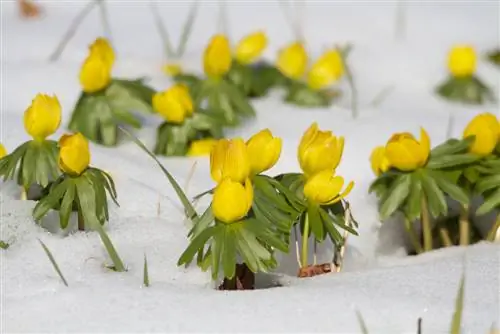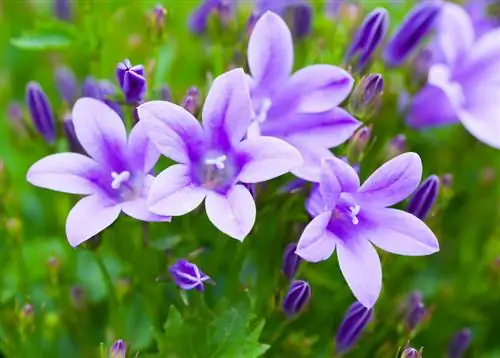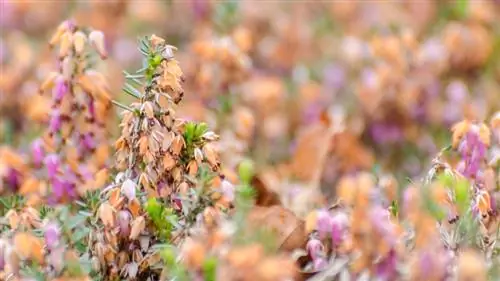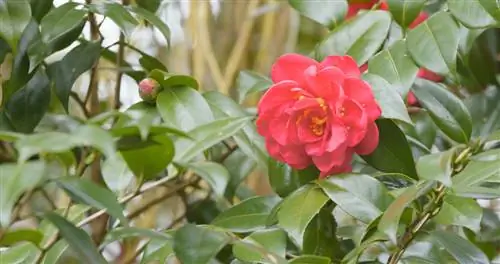- Author admin [email protected].
- Public 2023-12-16 16:46.
- Last modified 2025-01-23 11:22.
The bright yellow flowers of winter aconite appear under trees or in the rock garden at the end of February. The plant is an important food source for bees and other insects looking for nectar on the first warm days. If the winter aconite is allowed to spread freely under trees, over the years it will form magnificent, delicately scented carpets of flowers.

What is a winter aconite in the botanical profile?
The winter aconite (Eranthis hyemalis) is a yellow-flowering, widespread plant from the winter aconite genus and buttercup family. It grows 5 to 15 cm high, has pinnate, green leaves and produces showy cupped flowers in a bright yellow color in February and March.
Plant profile
- Botanical name: Eranthis hyemalis
- German names: Winterling
- Genus: Winter Aconites
- Family: Buttercup family
- Growth height: 5 to 15 centimeters
- Growth habit: Flat-growing, forms runners
- Main flowering period: February and March
- Leaf color: Strong green
- Leaf shape: Pinnate, fan-shaped or palmate
- Flower color: yellow
- Flower shape: Cup flowers about two to three centimeters in size
Origin
The completely frost-hardy plant originally comes from southern Europe, where it thrives primarily in moist deciduous forests and under bushes. As early as 1588, the botanist Joachim Camerarius the Younger brought winter aconites back from a trip to Italy and cultivated them in his garden in Nuremberg. The early bloomer quickly became an attraction in landscape parks and enjoyed increasing popularity among garden lovers.
Planting and care
The frugal winter aconites thrive in any normal, slightly acidic garden soil. Place the nodules about five centimeters deep in the ground in the fall, eight to ten centimeters apart. Ideally, you should place the plant under deciduous trees where the spring bloomers can spread freely. However, waterlogging should be avoided, as should substrate that is too dry.
It is important to regularly supply mature compost. Alternatively, you can leave fallen leaves to lie in a layer that is not too thick and allow them to rot. Avoid any tillage and only cut back the plants when the leaves have yellowed and shriveled at the end of May.
Propagation
Unless you cultivate a sterile variety in your garden, the winter aconite will self-exclude. However, the small plants need about four years to bloom.
Alternatively, you can dig up the ever-growing clumps after they have faded, carefully divide them and move them.
Diseases and pests
Winterlings are extremely robust and not very susceptible to pest infestation or disease. Only rust fungi occasionally bother the early spring messengers.
Tip
Since winter aconites are not planted deep, you can carefully dig up the plant in the bud stage and bring it into the house. Make sure that there is enough substrate on the tubers and place the signs of spring in bowls.






